Restoring Guam’s Coral Reefs
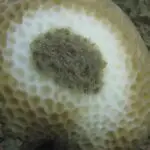
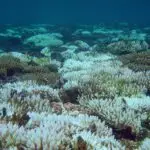
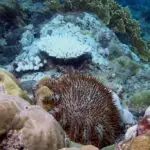
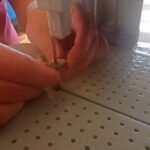
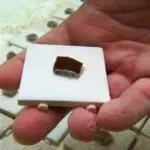
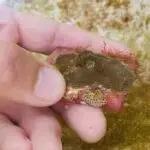
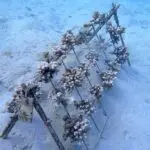
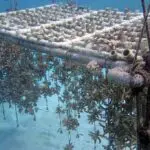
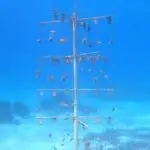
Table of Contents
Share This
Guam’s coral reefs and their decline
Coral reefs are among the most productive ecosystems on the planet.
They contribute greatly to cultural identity, education and tourism, and support millions of people as major food sources.
Coral reefs sustain the people of Guam in a variety of ways, from providing fish for fiestas to a beautiful snorkel spot on a hot day. The total economic value of Guam’s reefs is estimated at $127 million per year, based on their contributions to tourism, coastline protection, and food security. However, the value of Guam’s reefs depends on the coral’s health, and on its ability to provide the structure and habitat for all other species that make up the coral reef ecosystem.
Tourism and commercial fishing, although economically important for many island nations, have caused reductions in coral cover, fish abundance, and diversity of reef species all over the world.
Over the past few decades, a variety of causes have led to the decline of Guam’s reefs.
According to one study, Guam’s small-scale reef fishery catch has declined 86 percent since 1950, due to overfishing and a loss of coral habitat. Swimmers and people using small water craft damage fragile corals. Also, our growing population strains our sewage treatment facilities and storm-water system. This means more sediment (from rainwater runoff) and nutrients (from sewage) are swept onto reef flats, killing corals by smothering them and by promoting abundant growth of algae (Figure 1).
Poor land use practices, such as off-roading and burning grassland for hunting, lead to upland erosion, which clogs Guam’s reefs with more sediment.
In recent years, warming seawater temperatures have significantly harmed Guam’s corals as well. When seawater temperatures are elevated, corals reject the algae living in symbiosis with them. The algae live inside the coral tissues and provide 95 percent of the coral’s energy. When the coral ejects the algae, the process is called “bleaching,” because it causes the coral to appear pale or entirely white. In 2013, 85 percent of all species around Guam showed signs of bleaching (Figure 2).
Typhoons also can have a devastating effect on the reef by breaking and killing corals, often reducing them to rubble fields.
Lastly, periodic outbreaks of crown-of-thorns (the predatory seastar, Acanthaster planci) have also contributed to Guam’s reef decline. The crown-of-thorns directly feed on corals (Figure 3).
While most coral growth forms are at risk from these combined stressors, fast-growing branching species are declining most rapidly.
Coral conservation and restoration
Because reef are increasingly under threat, more must be done to manage and preserve Guam’s coral reefs.
Coral restoration, as an example, aims to preserve vulnerable coral species and rehabilitate damaged reefs. Various coral restoration techniques are being tested and developed here on Guam to help reefs recover. Coral restoration is similar to planting trees to help forests recover, in that different methods are used to reproduce, grow and plant specific types of coral.
Coral restoration is a much newer practice than forest restoration, and there is still a lot to learn; but Guam’s local reef scientists continue developing practices that are suited to Guam’s environment and corals.
It isn’t always possible to eliminate the stressors driving coral decline, but we can attempt to protect specific species that are very important to the reefs. And corals that survive bleaching events are potentially more resilient and can be used to stock damaged areas.
Here are three strategies currently being used on Guam to culture and preserve Guam’s corals:
Microfragmentation
Microfragmentation is the act of cutting a piece of coral into several minute coral fragments to trigger rapid coral growth and minimize how much coral needs to be removed from a donor parent colony (Figure 4). A part of one parent colony can produce multiple microfragments that are genetically identical to the original colony, which can then be reintroduced to the parent colony’s location or another suitable area. The healthy tissue on the top of the coral will grow down the exposed coral skeleton and onto the substrate that it is attached to (Figure 5 and 6). If the microfragments come from the same parent colony, they can fuse back together to form a larger juvenile colony. After it grows large enough, the coral can become sexually mature and continue to grow the reef.
Coral nurseries
When an area is affected by coral bleaching or other environmental stressors, a coral nursery can be established to grow healthy, resilient coral to plant back in the affected areas.
In 2013, the University of Guam Marine Laboratory, Underwater World Guam, and SECORE International established an ocean coral nursery in Guam’s Piti Bomb Holes Marine Preserve. The nursery cultures both sexual recruits and fragmented corals for rehabilitation and replanting.
In 2019, a second nursery was established in Cocos Lagoon: the Malesso’ coral nursery.
There are currently three restoration structures used in the Piti Nursery: coral tables, A-frames, and coral trees. Each method has its strengths for growing corals. The A-frames provide a stable substrate in sandy areas and are sunk into the sand. Fragments are then tied onto them and allowed to grow. Once the corals reach a certain size, they become sexually mature and will produce eggs and sperm, which will fertilize in the water and settle down to produce a coral “recruit.”
Because it takes a long time for corals to reach sexual maturity, restoration scientists can act as “speed-dating matchmakers” by placing A-frames with sexually mature corals near each other to increase the likelihood for fertilization (Figure 7).
Coral tables provide large and stable surfaces above and below the table (Figure 8). While some corals grow well upright on the top of the table, other corals grow better hanging below because they can grow in all directions. A key function of this technique is its ability to withstand Guam’s high wave energy during bad weather and tropical disturbances.
Coral trees can be compared to Christmas trees, built from PVC or fiberglass, with the tethered corals acting as the ornaments hanging off the branches (Figure 9). Many corals can be hung to the outlying branches, and they’re easy to remove for planting onto the reef. The coral trees are useful because they tend to be easier and cheaper to build than coral tables.
While each technique has its strengths, Guam’s coral nurseries are showing overall great success as places to grow small fragments into larger ones that can be pruned and planted where corals are needed and can survive (in a process known as outplanting).
Outplanting requires careful selection of sites that provide the environmental requirements corals need to survive. Restoration scientists look for the best light, water flow, substrate, depth, protection from damage and predators, and low sediment, to promote success for the corals.
Assisting coral reproduction
Roughly one week after the full moon in July, the mood is right and it is time for many of the corals of Guam to begin the spawning process. In the early evening, the coral will release sperm and eggs that float to the ocean surface for fertilization. Once the sperm fertilizes the egg, the new coral larvae can settle onto hard, clean substrates where the coral will continue to grow for the rest of its life.
In the wild, the larvae settle on rocks, limestone, or other solid surfaces; even the support columns for the Fish Eye Park in Piti, Guam.
The coral spawning can be quite beautiful, sometimes looking like countless tiny pearls are being released into, and floating up through, the water.
During the spawning, researchers can also collect eggs and sperm from specific colonies to be fertilized in the University of Guam Marine Lab. In the lab, the sperm and eggs can be mixed in the proper ratio and settled onto different settlement tiles. After proper settlement, restoration scientists can care for the corals in the lab by establishing the proper water flow, light, and low-sediment conditions. When the corals are big enough to be at less risk of being eaten or smothered, a suitable outplanting site is found and the corals are attached to the reef where the larvae will grow and, hopefully, one day they will spawn and continue to grow the reefs.
About the authors

Justin Berg was pursuing a master’s degree at the University of Guam Marine Lab. He was studying the coral microbiome affected by increased sedimentation due to river runoff in Fouha Bay, Guam. His major research interests are microbial biodiversity and their functions, coral reef restoration, and environmental effects on coral physiology.
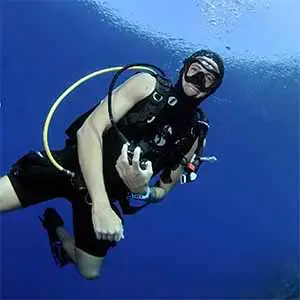
Colin Lock was a biology master’s candidate at University of Guam Marine Lab. His research was focused on coral fragmentation stress. The research includes coral cultivation, gene expression, and coral reef ecology.
Editor’s note: This authors were beginning graduate students in 2019 taking a course in scientific writing at the University of Guam. This article was assigned to provide the students with practice in communicating science to non-scientists. The students chose the topic which is related either to their thesis project or work experience. The instructor in the course is Dr. Laurie Raymundo, a UOG Marine Laboratory faculty member.
For further reading
Burdick, David. “Guam Reef Life Home Page.” Guam Reef Life, 2017.
Coral Restoration Foundation. “Welcome to the Biggest Coral Reef Restoration Effort on the Planet.”
SECORE International. “Home-Giving Coral Reefs a Future.” Last modified 25 June 2020.
Underwater World. “A Guam Aquarium Experience.”
US Department of Commerce National Oceanic and Atmospheric Administration Coral Reef Conservation Program. Coral Reef Resilience to Climate Change in Guam in 2016. By Jeffrey Maynard, Steven Johnson, David R. Burdick, Andrew Jarrett, Jordan Gault, Jacques Idechong, Roxanna Miller, Gareth J. Williams, Scott F. Heron, and Laurie J. Raymundo. NOAA Technical Memorandum CRCP 29. Silver Spring: CoRIS, 2016.
Zeller, Dirk, Shawn Booth, Gerald Davis, and Daniel Pauly. “Re-estimation of Small-scale Fishery Catches for US Flag-associated Island Areas in the Western Pacific: The Last 50 Years.” Fishery Bulletin 105, no. 2 (2007): 266-277.
